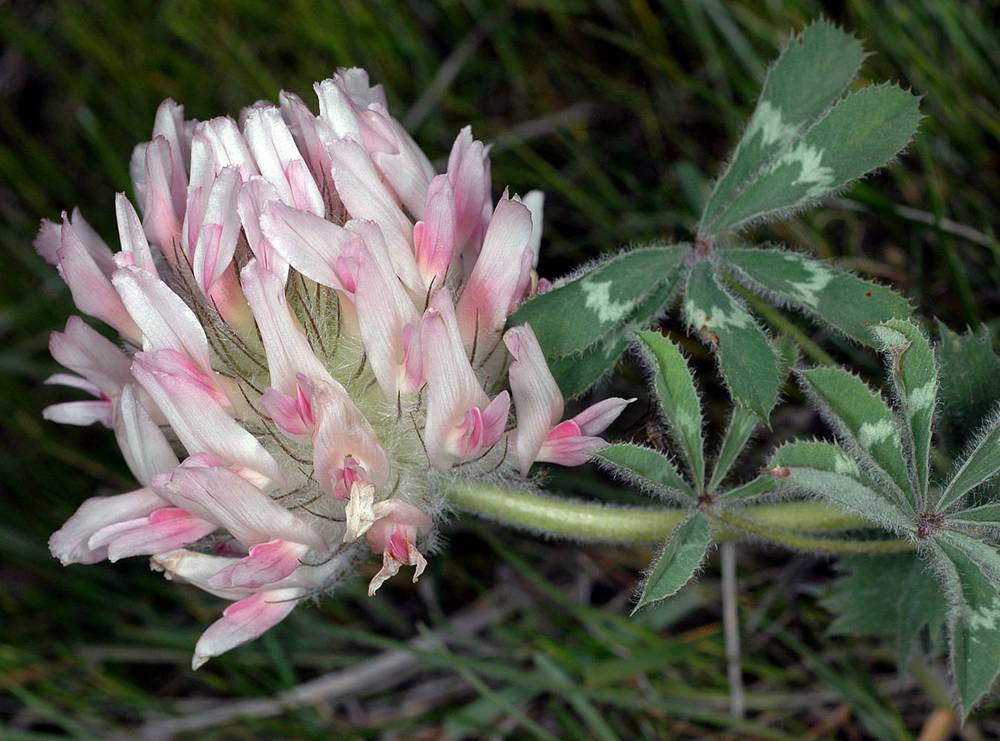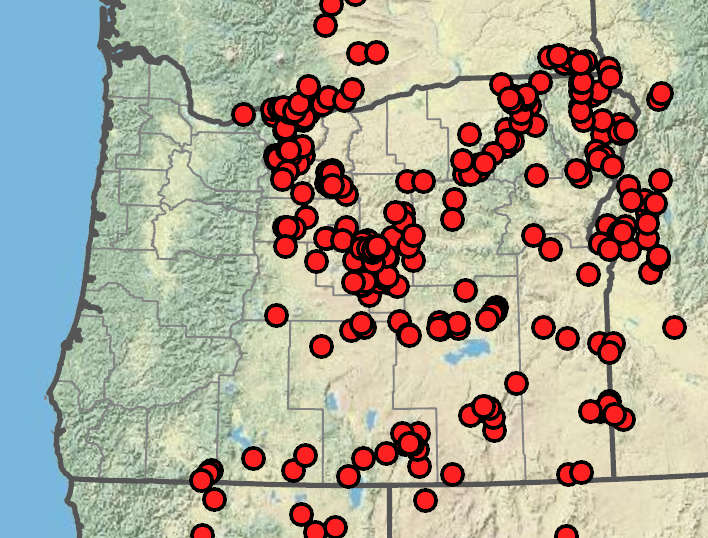Trifolium macrocephalum
Trifolium repens
big-headed clover, largehead clover
Dutch clover, white clover
palmate;
leaflets (5)7–9, broadly to narrowly obovate, often folded, 10–27 × 4–11 mm, bases cuneate;
margins serrulate or irregularly lobed;
veins thickened, especially distally;
tips rounded or truncate, apiculate;
surfaces abaxially villous, adaxially sparsely villous to glabrate;
petioles 10–140 mm;
petiolules 0.9–1.2 mm;
stipules ovate, obovate, or oblong, 10–30 mm;
margins entire.
pinnate;
leaflets 3, obovate, obcordate, or orbiculate, 6–40 × 4–25 mm, often with light markings, bases cuneate;
margins serrulate distally;
veins moderately prominent;
tips rounded, emarginate, or retuse;
surfaces glabrous;
petioles 50–200 mm;
petiolules ? 1 mm;
stipules lanceolate, 9–13 mm;
margins entire;
tips short-subulate.
terminal, 20–32-flowered, globose or ovoid-ellipsoidal, 25–80 × 30–70 mm;
involucres absent;
bracteoles broadly ovate, membranous; ? 0.5 mm, truncate.
axillary, 20–40+-flowered, globose, 15–35 × 15–35 mm;
involucres absent;
bracteoles lanceolate, 1–2 mm, white.
20–80 mm.
erect from prostrate stems, 15–300 mm.
erect, 1–1.5 mm.
elongate, strongly reflexed in fruit, 3–5 mm.
20–30 mm;
calyces campanulate, 10–22 mm, villous;
veins 10–15;
tubes 2.5–4 mm;
lobes subulate, subequal, 2–4 × tube length, plumose;
orifices open;
corollas 20–28 mm, white; creamy white, or pinkish;
banners ovate or oblong, 20–28 × 10–13 mm;
tips rounded or slightly emarginate;
keel petals deep pink.
8–13 mm;
calyces campanulate, 3–5 mm, glabrous;
veins 6–10;
tubes 1.5–2.5 mm;
lobes unequal to subequal; adaxial triangular-lanceolate; < tube;
orifices open;
corollas 4–12 mm, 1–2 × calyces, white, often becoming pinkish in age;
banners ovate-lanceolate or oblong, 4–12 × 1–4 mm;
tips rounded.
longitudinally dehiscent; ovoid, 4–5 mm; ? calyces.
longitudinally dehiscent, linear-oblong, 4–5 mm; ? calyces.
1–2; mitten-shaped to ellipsoid, 2.5–3 mm, yellow or reddish; smooth.
3–4; ovoid-reniform, 1 mm, yellow; reddish brown, or light brown; smooth; glossy.
=32, 48.
=16, 28, 32, 48, 64.
Trifolium macrocephalum
Trifolium repens
Rocky places, hard, compacted clay gumbo, lava beds, sage-covered slopes. Flowering Apr–Jul. 0–2200 m. BR, BW, Col, ECas, Lava, Owy. CA, ID, NV, WA. Native.
Trifolium macrocephalum has the largest inflorescences of any species in the genus. The name T. megacephalum is an illegitimate replacement name for Lupinaster macrocephalum.
Fields, lawns, roadsides, waste places. Flowering Apr–Jul. 0–2200 m. All ecoregions except Col. CA, ID, NV, WA; throughout North America; worldwide. Exotic.
Trifolium repens is native to Eurasia. It may very well be the most important temperate pasture plant (Baker & Williams 1987) and has been considered the most important perennial pasture plant in North America (Piper 1924). It was introduced at least as early as the mid-1800s (Mack 2003) and spread so rapidly that it became known to Native Americans as “White Man’s Foot Grass” (Strickland 1801). The species is morphologically diverse; most material from North America represents var. repens, but some specimens fit within the circumscriptions given by Zohary and Heller (1984) of var. giganteum, with inflorescences to 35 mm wide and leaflets nearly 40 mm, while others have smaller, pale pink petals with hairy petioles and pedicels, and approach var. biasolettii.
Michael Vincent
Michael Vincent
- Local floras:
BC,
CA,
OR,
WA
- Local Web sites:
CalFlora,
CalPhotos,
Flora NW,
PNW Herbaria,
Turner Photog.
WildflowerSearch
iNaturalist (observations)
USDA Plants Database
- LBJ Wildflower Center
- SEINet
- Plants of the World Online
- Encyclopedia of Life
- Wikipedia
- Google Image Search





